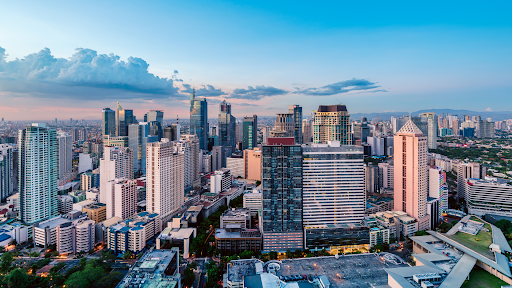The Build! Build! Build! Program aims to accelerate infrastructure in the Philippines, which will supposedly help further economic development.
Impact of BBB Projects in Real Estate
When we talk about real estate, one of the primary considerations in choosing a condominium unit for sale, townhouse, or house and lot is “location, location, location.” This is because the right location not only helps you cut transportation costs. Living in a home in a centralized location helps improve the quality of your life as you are in the center of all the action and whatever you need to go about the life you want to live. As such, real estate is rooted, to a large extent, in convenient access to transportation infrastructures such as buses, metro or train stations, airports, and highways. As such, prime properties are those that are centrally located to transportation hubs, major throughways, and road networks.BBB Projects On Track
Here are 11 of the infrastructure projects you should look forward to under the BBB program.1. Metro Manila Skyway Stage 3
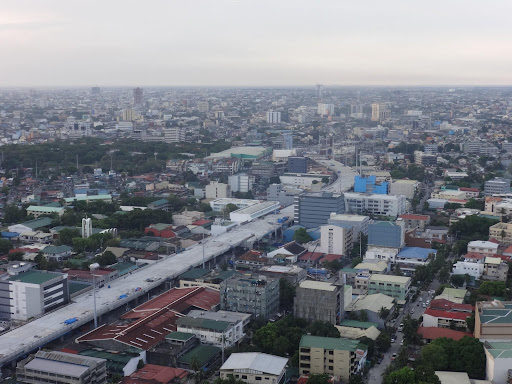
Image from Wikimedia Commons.
The Metro Manila Skyway 3 is the third infrastructure phase of the overall Skyway system. As part of the EDSA decongestion program, the 18.83 kilometer elevated expressway was originally planned in four segments, which would have the infrastructure crossing over the Pasig River, then meet up with the NLEX Connector near the PUP campus, and then pass through Santa Mesa, Manila. Further modifications resulted in realigning part of the infrastructure due to right-of-way issues and crossing the Balintawak Interchange to connect to the Balintawak Toll Plaza of the North Luzon Expressway in Caloocan, opening a new possibility to expand the infrastructure to Northern Luzon. Now already in use, the government plans to add and use more exits and cites the infrastructure as the very reason why travel speed along EDSA has increased from 16 kilometers per hour on average to 28 kilometers per hour.2. More EDSA decongestion infrastructure
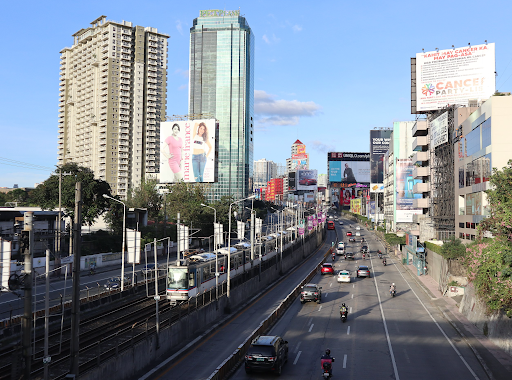
Image from Wikimedia Commons.
Bonifacio Global City (BGC)-Ortigas Center Link Roads is said to connect the cities of Taguig and Makati to Pasig City by 12 minutes. Moreover, the Bonifacio Global City (BGC)-Ortigas Center Link Roads are said to divert some 30,000 cars who pass through the Guadalupe section of EDSA. The Estrella-Pantaleon Bridge, on the other hand, is a four-lane bridge across the Pasig River that aims to connect Mandaluyong to Makati. Once done in the second to third quarter of this year, the current administration said it will reduce EDSA traffic by another 10,000 to 15,000 cars.3. Binondo-Intramuros Bridge
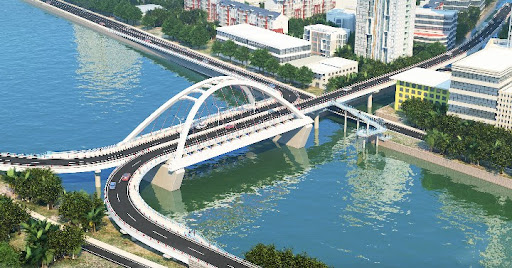
Image from PNA.gov.
Currently, the Binondo-Intramuros Bridge is 60 percent complete. The design and the funding secured for the bridge pays homage to the country’s good diplomatic relations with China. When finished (in the fourth quarter of this year), the current administration says around 30,000 vehicles per day is expected to pass this bridge.4. Cavite-Laguna Expressway network improvements

Image from Wikimedia Commons.
The Cavite-Laguna Expressway has since provided relief for commuters who travel from the nearby provinces of Cavite and Laguna to Metro Manila and back. The delivery of the Alabang-Sucat Extension, the Cavite link going to Silang, and the completion of the North Luzon Expressway (NLEX) Harbor Link will result in significantly reduced travel times from hours to just mere minutes.5. Major throughways in Luzon provinces

Image from Wikimedia Commons.
Some of the BBB program accomplishments for Luzon provinces is the Urdaneta City Bypass Road, a 7.17-kilometer throughway worth PHP2.2 billion, the Pulilan-Baliuag Diversion Road that commuters use to go to NLEX, and the Tarlac-Pangasinan-La Union Expressway (TPLEX), a major component of the Luzon Spine Expressway Network. Moreover, the current administration said it has plans to deliver a 30-kilometer four-lane expressway from Tarlac to Cabanatuan City, which is known as the Central Luzon Link Expressway. The PHP14 billion project aims to reduce travel time from 70 minutes to just 20 minutes. The completion of the Arterial Road Bypass in Plaridel, Bulacan involved widening the 22-kilometer road from two lanes to four lanes, benefitting 15,000 commuters per day who travel via the major throughway. The Sariaya Bypass road in Quezon is a 7.42-kilometer road project, which is set to reduce the traffic on Daang Maharlika going to the province. Quezon will also benefit from the delivery of the first portion of the 12.8-kilometer Laguna-Quezon road, which is set to reduce travel time by 25 to 40 minutes. A new diversion road in Batangas worth PHP1 billion is also set to deliver this year. The project is a four-lane kilometer road from Batangas City to the towns of Bauan and Mabini and will result in reducing the travel time from two hours to 30 minutes. Meanwhile, the Sorsogon City Coastal By-pass road is close to completion. The road will have commuters use the 5.66-kilometer coastal road to reach Sorsogon and reduce travel time by as much as 43 minutes.6. General Santos International Airport
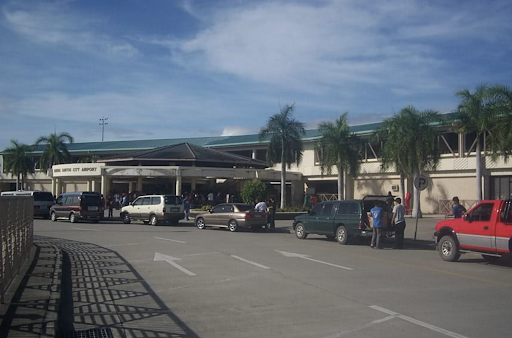
Image from Wikimedia Commons.
International airports are also key to invite more foreign investment and economic opportunities, such as tourism. This year, the General Santor Airport is set to complete its PHP1.09-billion upgrade and unveil to the world as a fully-equipped international airport. The upgrade includes a covered boarding bridge for passengers and crew to get to and from their planes.7. Metro Davao 55-Kilometer Bike Lanes
 Public infrastructure also means creating pathways for people to move from one point to another safely and more environment-efficient. One of the “high-impact” projects unveiled under the BBB program is the 55-kilometer network of bicycle lanes that will connect residential areas to selected main hubs in Metro Davao. The infrastructure project, which was finished in June of this year, cost PHP150 million. The infrastructure has helped ease the public transportation load, especially in the ongoing pandemic.
Public infrastructure also means creating pathways for people to move from one point to another safely and more environment-efficient. One of the “high-impact” projects unveiled under the BBB program is the 55-kilometer network of bicycle lanes that will connect residential areas to selected main hubs in Metro Davao. The infrastructure project, which was finished in June of this year, cost PHP150 million. The infrastructure has helped ease the public transportation load, especially in the ongoing pandemic.
8. The Bohol-Panglao International Airport

Image from PNA.gov.
Another international airport on the list is the Bohol-Panglao International Airport. Touted as the only completed BBB project of the 15 that are slated in the Visayas region, the P7.8-billion project actually started during the administration of the late former President Benigno Aquino III. The decision to upgrade the airport may be attributed to the fact that Bohol, Panglao, and the nearby provinces are some of the most visited tourists hotspots by locals and foreigners in the Philippines.9. Mindanao Railway

Image from Wikimedia Commons.
For many Mindanaoans, traveling from one point to another in the region using a unified transit system is the dream. Under the BBB program, however, there are already efforts underway to make this dream infrastructure project an actual reality. Also known as the Trans-Mindanao High Speed Railway, the Mindanao Railway is a proposed intercity rail system in Mindanao costing PHP81.69-billion, which is funded by an official development assistance from China. Since 1936, there were major efforts to get the Mindanao Railway started. Through the BBB program, the Mindanao Railway will be a network of a total of 2,278 kilometers of track, with the centerpiece being a circumferential mainline that connects some of the major cities in Mindanao. An east-west radial mainline is eyed to be built to the Zamboanga Peninsula, among other things. The first phase, the Tagum–Digos segment of the circumferential mainline, is set to be constructed first, with the other segments of the railway track network constructed next in phases. The current administration said they are still waiting for the shortlist of bidders for its design and construction from the Chinese government.10. Clark International Airport Expansion Phase 1
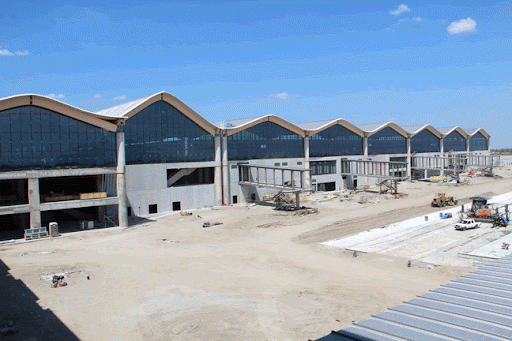
Image from ppp.gov.ph.
The Clark International Airport is one of the major international airports in the country, and expansion plans have already started to support the growing operations of the international airport. One of the plans entails constructing a new passenger terminal building that can accommodate 8 million passengers yearly, including construction and installation of all landslide and air-slide associated facilities.11. Subic-Clark Railway Project
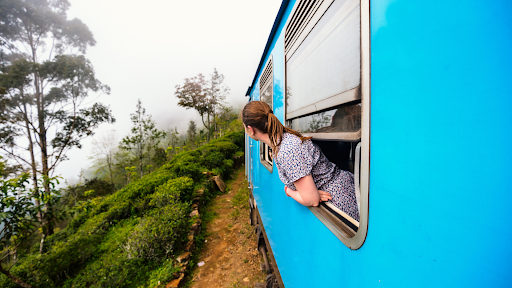 The Subic-Clark Railway Project is set to be a significant component of the existing PNR Luzon System Development Framework. This railway project will provide initial freight service between the Subic Bay Freeport Zone and the Clark Freeport and Special Economic Zone. The railway project will also link Subic Port with Clark International Airport and other major economic hubs in Central Luzon, especially New Clark City. Moreover, the Subic-Clark Railway Project will further the formation of an integrated logistics hub to help decongest Metro Manila freight and port traffic.
Are you excited about these BBB infrastructure projects? Check out this space for more real estate news and updates.
The Subic-Clark Railway Project is set to be a significant component of the existing PNR Luzon System Development Framework. This railway project will provide initial freight service between the Subic Bay Freeport Zone and the Clark Freeport and Special Economic Zone. The railway project will also link Subic Port with Clark International Airport and other major economic hubs in Central Luzon, especially New Clark City. Moreover, the Subic-Clark Railway Project will further the formation of an integrated logistics hub to help decongest Metro Manila freight and port traffic.
Are you excited about these BBB infrastructure projects? Check out this space for more real estate news and updates. Like What you've read?
If so, please join our newsletter and receive exclusive weekly home buying tips, financing guides and Philippine real estate news. Enter your email and click Send Me Free Updates


